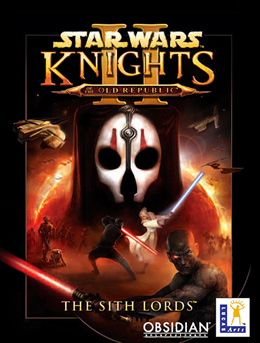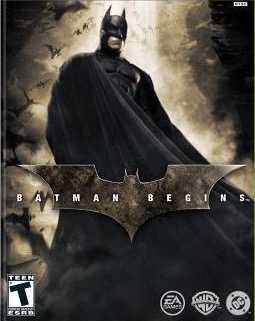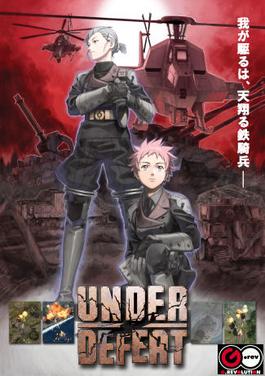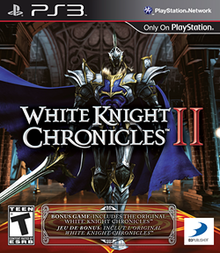
Star Wars Jedi Knight: Jedi Academy is a first- and third-person shooter video game developed by Raven Software and published by LucasArts for Microsoft Windows, OS X and Xbox in 2003. Vicarious Visions was responsible for the development of the Xbox version. The game is a sequel to 2002's Star Wars Jedi Knight II: Jedi Outcast and the fourth and final installment in the Star Wars: Jedi Knight series. The single-player story, set in the fictional Star Wars expanded universe two years after Jedi Outcast, follows Jaden Korr, a new student at Luke Skywalker's Jedi Academy under the tutelage of the previous games' protagonist, Kyle Katarn. As Jaden, players are tasked with investigating a Dark Jedi cult called the Disciples of Ragnos, while slowly learning the ways of the Force and committing themselves to either the light side or the dark side.

Star Wars Knights of the Old Republic II: The Sith Lords is a role-playing video game developed by Obsidian Entertainment and published by LucasArts. It is the sequel to BioWare's Star Wars: Knights of the Old Republic and was released for the Xbox on December 6, 2004, for Microsoft Windows on February 8, 2005, for OS X and Linux on July 21, 2015, for Android and iOS on December 18, 2020 and for Nintendo Switch on June 8, 2022. Like its predecessor, it is set in the Star Wars universe 4,000 years before the events of the film Episode I: The Phantom Menace and is based on the d20 System developed by Wizards of the Coast.

Lineage II is a massively multiplayer online role-playing game (MMORPG) for Microsoft Windows and the second game in the Lineage series. It is a prequel to Lineage and is set 150 years before the first game. It has become popular since its October 1, 2003 launch in South Korea, reporting 1,000,918 unique users during the month of March 2007. To date, the game has been played by more than 14 million users, most of whom are based in Asia.

Batman Begins is a stealth action-adventure game based on the film of the same name, exploring the first year of Batman's crusade against crime. It was released in June 2005 for the Game Boy Advance, GameCube, PlayStation 2, and Xbox. The console version of the game was developed by Eurocom and co-published by Electronic Arts and Warner Bros. Interactive Entertainment in conjunction with DC Comics. Vicarious Visions developed a distinct version of the game for Game Boy Advance, and Klear Games adapted the game for mobile phones, with both featuring action-platform gameplay. The film's original cast provided a voice-over reprisal in the game, with the exception of Gary Oldman, who portrays James "Jim" Gordon in the film and was replaced by Gavin Hammon in the game.

Obscure is a survival horror video game developed by Hydravision Entertainment and published by DreamCatcher Interactive in North America, Ubisoft in China and MC2-Microïds in other territories for Microsoft Windows, PlayStation 2 and Xbox. It was released on October 1, 2004 in Europe and on April 6, 2005 in North America.

Under Defeat is a shoot 'em up video game developed by G.rev and released in Japanese arcades in 2005. The game takes place in an alternate reality during World War II, where players control German-speaking characters fighting against English-speaking characters. Their vehicles are patterned after those of real-life Allied and Axis powers. A port for the Dreamcast was released in 2006 and marketed as the last game for the system, although two more were released the following year. The game was commercially successful, but received average reviews from critics because of its traditional and derivative gameplay.

Marvel: Ultimate Alliance is a 2006 action role-playing video game, developed by Raven Software for the PlayStation 2, PlayStation 3, Xbox and Xbox 360, and published by Activision. The game was ported to the PlayStation Portable and Wii by Vicarious Visions, and to Microsoft Windows by Beenox. A different Game Boy Advance version was developed by Barking Lizards Technologies. A re-release version based on Xbox 360's latest edition was ported by Zoë Mode for Windows, PlayStation 4, and Xbox One, and was released in July 2016.

Yggdra Union: We'll Never Fight Alone is a tactical role-playing game for the Game Boy Advance and PlayStation Portable, developed by Sting Entertainment as the second episode of the Dept. Heaven saga of games. Atlus USA localized and published both versions of the game in North America. 505 Games published the Game Boy Advance version in a limited number of European countries, such as Italy and France. A Nintendo DS side-game was released in Japan on December 3, 2009, as Yggdra Unison: Seiken Buyuuden. An updated version with bonus features was released in Japan for mobile platforms and Nintendo Switch in April 2019 and March 2020, respectively. A Windows version was released in early access on February 6, 2023, with a full release following on July 27, 2023, alongside a western release for Nintendo Switch.

White Knight Chronicles is a fantasy role-playing video game developed by Level-5 and Japan Studio and published by Sony Computer Entertainment for the PlayStation 3. It is Level-5's first project for the system. As of August 2009 it has sold 350,000 copies in Japan. A sequel titled White Knight Chronicles II was released in Japan in 2010. A related game for the PlayStation Portable, titled White Knight Chronicles: Origins was released in Japan, Europe and, Australia in 2011.

Dynasty Warriors Vol. 2 is a hack and slash video game, part of the widely popular Dynasty Warriors series, developed by Omega Force and published by Koei. The game was released exclusively on the PlayStation Portable.

Ys I & II is an action role-playing game compilation released by Hudson Soft and NEC for the PC Engine CD-ROM² in 1989 and TurboGrafx-CD in 1990. It consists of enhanced remakes of the first two Ys games by Nihon Falcom for the PC-8801 home computer in Japan. It was released as Ys Book I & II for the TurboGrafx-CD in North America in 1990, and was a pack-in title for the TurboDuo in 1992. Ys I & II was released on the Virtual Console in Japan in October 2007, and worldwide the following year.
Star Wars: Jedi Knight is a series of first- and third-person shooter video games set in the fictional Star Wars expanded universe. The series focuses primarily on Kyle Katarn, a former Imperial officer who becomes a mercenary working for the Rebel Alliance, and later a Jedi and instructor at Luke Skywalker's Jedi Academy. While the first game is set a year after the events of A New Hope, the sequels take place in the decade following Return of the Jedi.

Assassin's Creed: Altaïr's Chronicles is a 2008 action-adventure video game developed by Gameloft and published by Ubisoft. It is the first spin-off installment in the Assassin's Creed franchise, and a prequel to 2007's Assassin's Creed. Taking place in the year 1190 AD, one year prior to the events of Assassin's Creed, the game revolves around Altaïr Ibn-LaʼAhad's search for an artifact called the Chalice, which brings him into conflict with the Templar Order. Altaïr travels to several cities in the Middle East during the game, including Jerusalem, Acre, and Damascus, as well as Tyre and Aleppo, which are new to the series.

Knights in the Nightmare is a strategy-shooter role-playing game hybrid from Sting Entertainment, and the fourth episode in the Dept. Heaven series of video games. It was released by Atlus USA in North America. Sting released a special edition version of Knights in the Nightmare, called the Knights in the Nightmare DHE Series Special Pack; it includes a copy of Yggdra Union: We'll Never Fight Alone for the Game Boy Advance.

Ghosts 'n Goblins: Gold Knights and Ghosts 'n Goblins: Gold Knights II, released in Japan as Makaimura Kishi Retsuden and Makaimura Kishi Retsuden II respectively, are a pair of run and gun platform games developed and published by Capcom for iOS. Both titles were removed from the Apple App Store on May 10, 2016.

Yggdra Unison is a real-time strategy game for the cellular phone and Nintendo DS, developed by Sting Entertainment as a "fandisc"-type spinoff to Yggdra Union. The original cellphone version was self-published and released on November 11, 2007; the DS version was published by Atlus and released on December 12, 2009. Neither installment has been released in any language other than Japanese. The game display is similar to that of Yggdra Union and Blaze Union, but all action is in real-time and units are allowed to move freely instead of on a grid. The DS version is mainly stylus-based with support functions and menu displays toggled by the R/L and directional buttons.

White Knight Chronicles: Origins is a role-playing video game developed by Japan Studio, and published by Sony Computer Entertainment exclusively for the PlayStation Portable. The game is a prequel to the 2008 title White Knight Chronicles and was released on February 3, 2011 in Japan. In Europe, the game was released on June 8 in most European countries, June 9 for Australia and New Zealand and June 10 for UK and Ireland, with no plans for a North American release.

Black Knight Sword is a side-scrolling platform game co-developed by Grasshopper Manufacture and Digital Reality. It was released in North America on the PlayStation 3 via the PlayStation Network on December 11, 2012 and on Xbox 360 via Xbox Live Arcade on December 12, 2012.

Final Fantasy is a fantasy role-playing video game developed and published by Square in 1987. It is the first game in Square's Final Fantasy series, created by Hironobu Sakaguchi. Originally released for the NES, Final Fantasy was remade for several video game consoles and is frequently packaged with Final Fantasy II in video game collections. The first Final Fantasy story follows four youths called the Warriors of Light, who each carry one of their world's four elemental crystals which have been darkened by the four Elemental Fiends. Together, they quest to defeat these evil forces, restore light to the crystals, and save their world.

Chain Chronicle is a tower defense role-playing game developed and published by Sega for iOS, Android, and PlayStation Vita. It was released in Japan on July 26, 2013, for iOS, August 1, 2013, for Android and on July 16, 2014, for the PlayStation Vita. The game is licensed in Asia by SNDA released in China, MobiMon for both Taiwan and Macau, Actoz Soft for South Korea and Gumi Asia for both Southeast Asia and North America, however the game was closed down in North America and Southeast Asia on February 29, 2016.


















